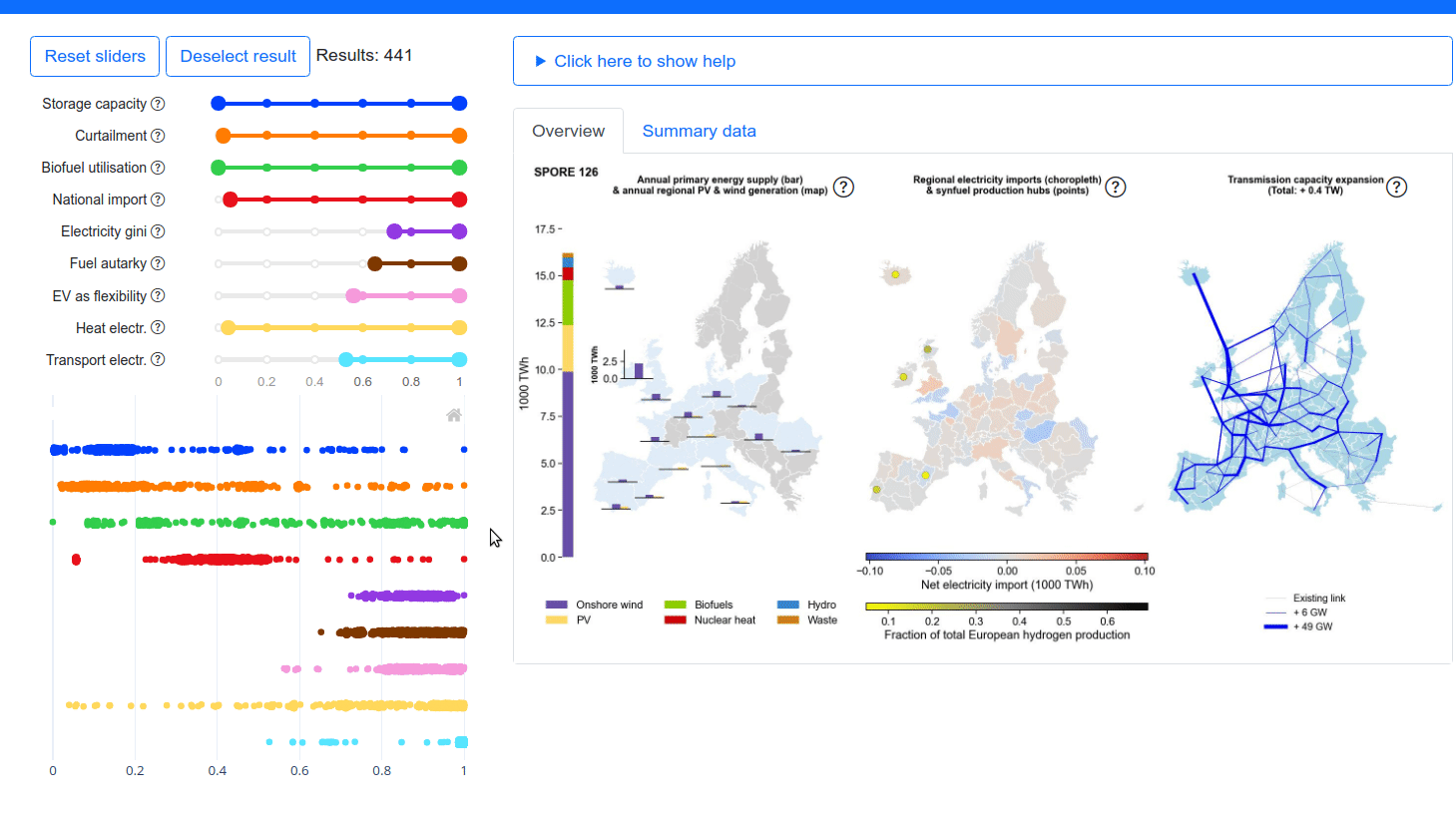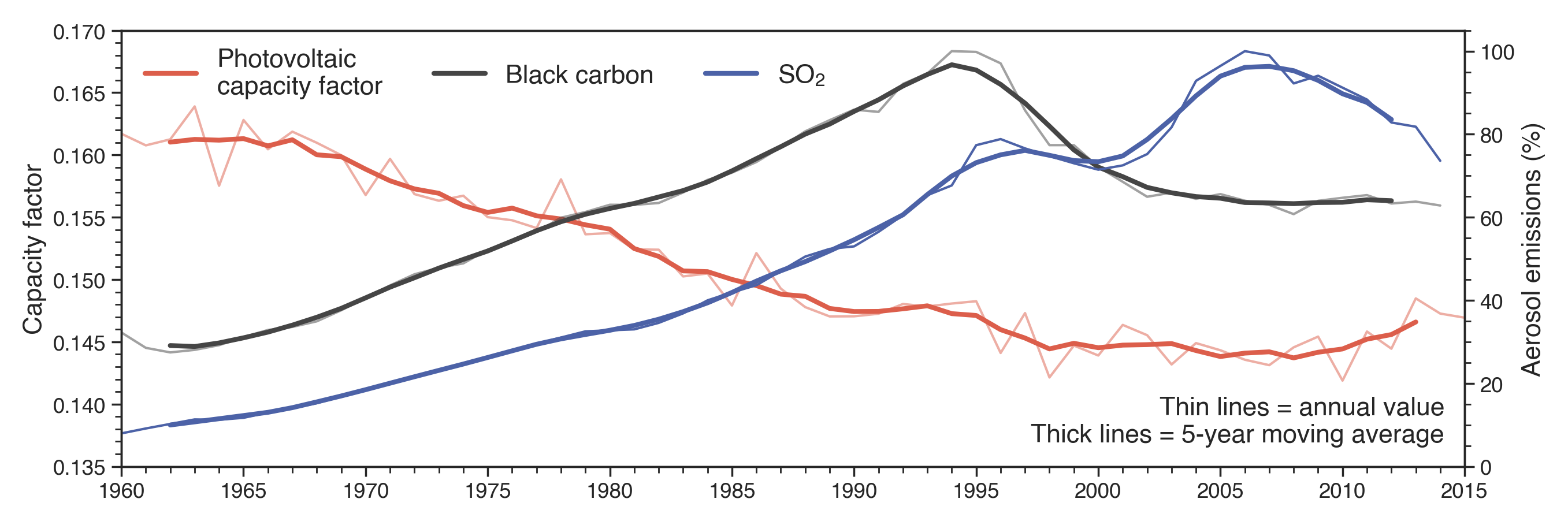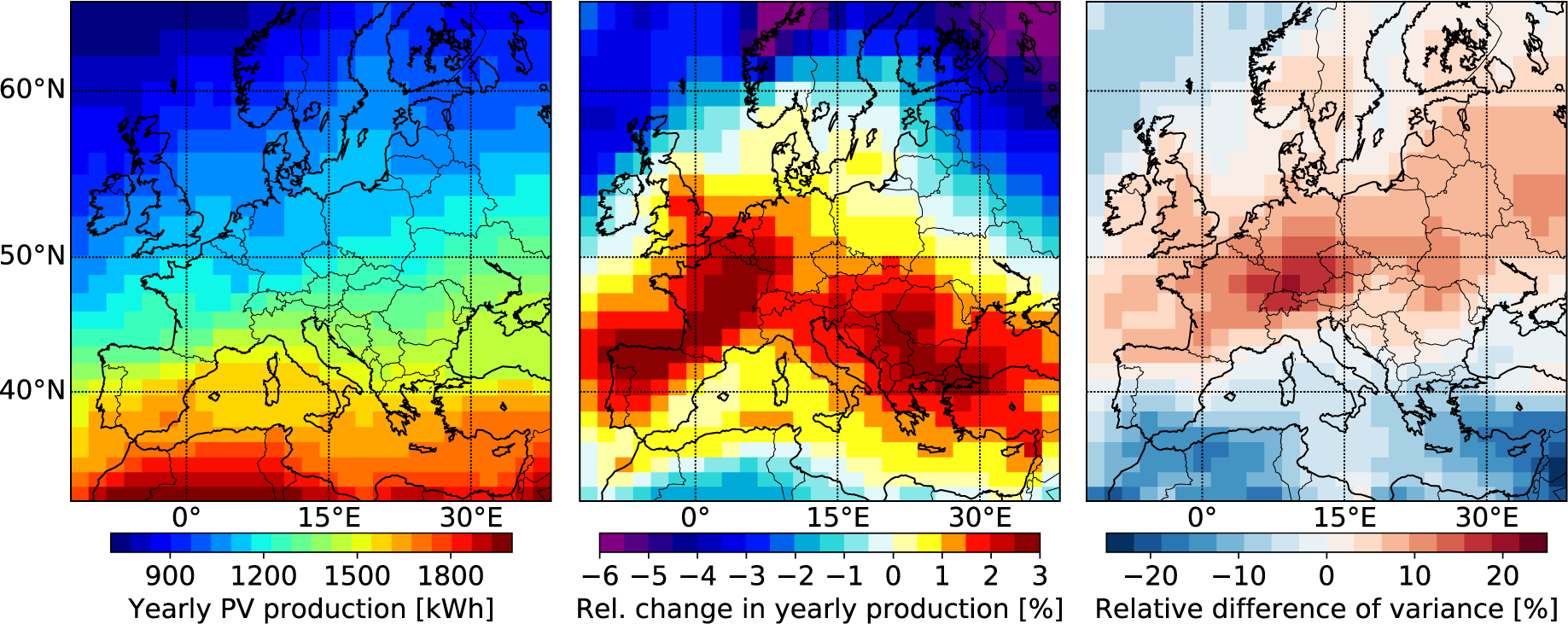Diversity of options to eliminate fossil fuels and reach carbon neutrality across the entire European energy system
The interactive scenario explorer in action.
We show a diversity of untold options to meet all energy demand based on renewable energy, with a complete phase-out of oil and gas imports. The results can be viewed in an interactive scenario explorer. With a marginal increase above optimal cost, the reliance of an energy self-sufficient Europe on specific solutions, like biofuels, battery storage, transmission expansion, or heat electrification, can vary from not being used at all to being key to system stability. → Pickering, Lombardi and Pfenninger (2022), Joule.
Read more...

